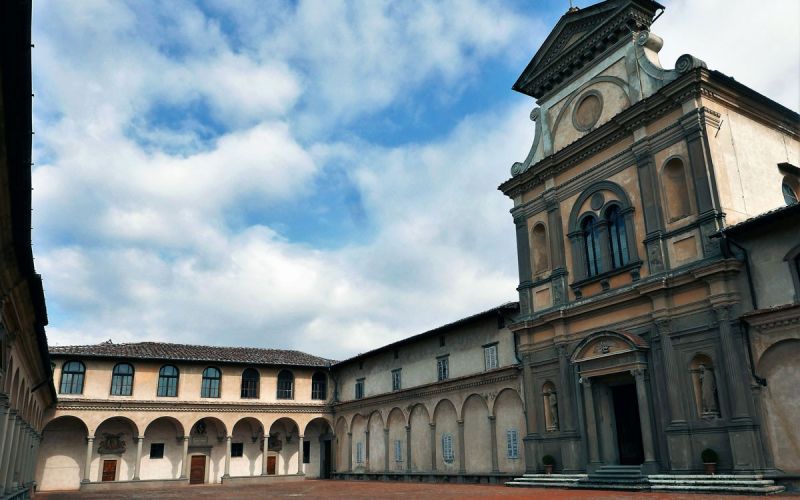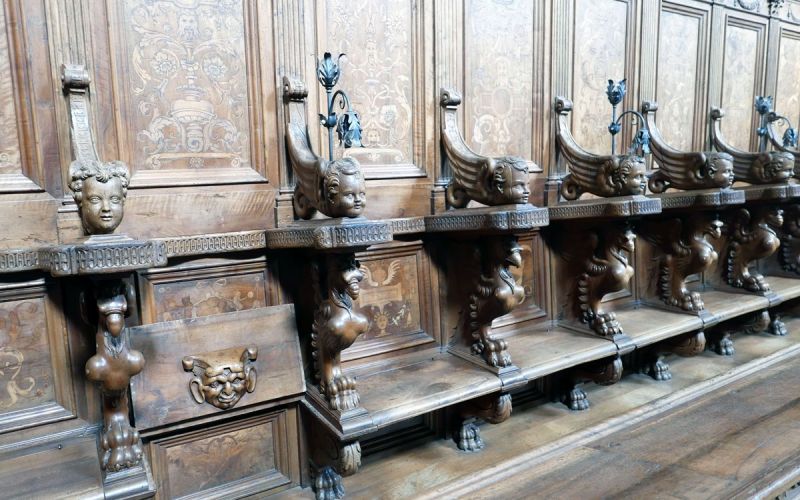The Certosa del Galluzzo in Florence
If there is a place not to be missed close to Florence, it is the “Certosa del Galluzzo”, a Carthusian monastery in Florence located in the district of Galluzzo, on the road coming from Panzano in Chianti.
Founded in 1342 on Mount Acuto by the Florentine noble Niccolò Acciaiuoli at the confluence of the 2 rivers Ema and Greve, the Certosa del Galluzzo developed over the centuries thanks to the many gifts of benefactors. It followed the rules of the Carthusians, enacted in 1084 by Saint Bruno for the Monastery of the “Grande Chartreuse” in France which imposed it is located far from the city, in a place which must remain solitary and silent. Dedicated to San Lorenzo martyr, it has been completed and embellished until the 16th century. Orcagna and Giovanni della Robbia stayed there, and the Certosa has been the refuge of Jacopo Carucci, detto il Pontormo during the plague that hit Florence in 1523.
The Certosa del Galluzzo has a rich and troubled history: the Pope Pio VI stayed there in 1798, sequestrated by Napoleon Bonaparte. Napoleon then put an end to the the Carthusian community. It is only in 1819 that it could return. After the Italian unity in 1860, the government let the monks in the Certosa, but the buildings became property of the Italian state. In 1958, the Cistercian Benedictines took over the monastery, and made the vast architectural complex accessible to the public. Today, it is the Communità di San Leolino, established in Panzano, which is the custodian of the Certosa, and organizes visits.
From the level of the store yard, a monumental staircase provides access to convent buildings and cloisters:
- The “Pinoteca” installed in the great refectory of the palace, includes many works and many portraits of saints by Orazio Fidani (1550 and 1553) Five frescoes, scenes of the Passion executed by the Pontormo (1523 - 1525) during his stay at Certosa to escape the epidemic of plague that raged in Florence can also be seen.
- The San Lorenzo Church, founded in the Trecento, was transformed in the 16th century and is richly decorated with frescoes, paintings and a sumptuous marble altar of the 16th century. Wooden choir stalls are going along three sides of the church stalls.
- The cloisters: first a large Renaissance cloister, “the cloister of the dead” as the monks were buried there, the number of graves being strictly that of cells, a new death moving the remains of a dead precedent to a mass grave. It is decorated with a large well and ceramics by Andrea and Giovanni della Robbia (15th and 16th centuries). This cloister gives access to the so-called “Chiostro dei Conversi”, a small structure formed by two superimposed loggias that lead into the refectory.
- The 18 cells of the monks, some of which are open to the public, opening on the cloister of the dead. Each cell consists in a bedroom and a room for praying, furnished with very essential furniture pieces, and a small secluded garden. The configuration of those cells was a model for Le Corbusier for his housing units in Marseille.
Concerts and events of various kinds are organized by the Community of San Leolino in the Certosa del Galluzzo now called Certosa di Firenze.
Don’t miss visiting this superb location!













